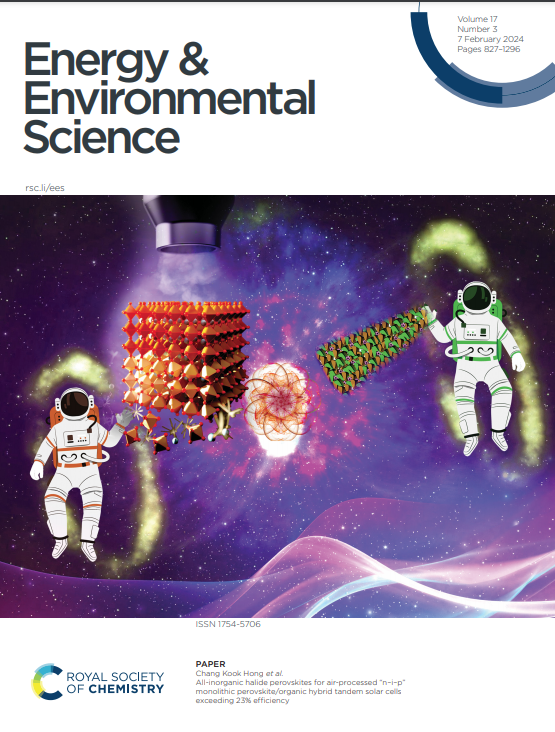电化学与纳米结构分析揭示了PEMWE的降解现象
IF 30.8
1区 材料科学
Q1 CHEMISTRY, MULTIDISCIPLINARY
引用次数: 0
摘要
了解质子交换膜电解(PEMWE)的降解机制对于提高该技术的长期耐用性至关重要。在这项研究中,我们通过电化学诊断和定量非原位表征技术的结合,研究了四种不同的加速应力测试方案引起的降解。我们确定了多个相互关联的降解途径,这些途径强烈依赖于操作模式。一个关键的发现是Pt涂层从阳极多孔传输层(PTL)上溶解,这改变了PTL和催化剂层之间的界面,导致Pt沉积在膜内。这个过程可能会增加自由基形成和化学膜降解的风险。虽然钛基PTL上的Pt涂层通常用于防止钝化和降低接触电阻,但它们在降解中的作用在很大程度上被忽视了,这强调了评估PTL稳定性和催化剂层的必要性。此外,ir基阳极催化剂氧化态的变化会影响其活性和导电性。值得注意的是,当通过氧化还原瞬态循环时,与稳定氧化状态下的操作相比,达到了更高的氧化程度。本文章由计算机程序翻译,如有差异,请以英文原文为准。
Degradation Phenomena in PEMWE Revealed by Correlative Electrochemical and Nanostructure Analysis
Understanding degradation mechanisms in proton exchange membrane water electrolysis (PEMWE) is critical for advancing the long-term durability of the technology. In this study, we investigate degradation induced by four distinct accelerated stress test protocols through a combination of electrochemical diagnostics and quantitative ex situ characterization techniques. We identify multiple interconnected degradation pathways that strongly depend on the operational mode. A key finding is the dissolution of Pt-coating from the anode porous transport layer (PTL), which alters the interface between the PTL and catalyst layer and leads to Pt deposition within the membrane. This process potentially increases the risk of radical formation and chemical membrane degradation. Although Pt coatings on Ti-based PTLs are commonly used to prevent passivation and reduce contact resistance, their role in degradation has been largely overlooked, underscoring the need to assess PTL stability alongside that of the catalyst layers. Additionally, changes in the oxidation state of the Ir-based anode catalyst affect both activity and conductivity. Notably, a higher degree of oxidation is reached when cycling through redox transients compared to operation in steady oxidative regime.
求助全文
通过发布文献求助,成功后即可免费获取论文全文。
去求助
来源期刊

Energy & Environmental Science
化学-工程:化工
CiteScore
50.50
自引率
2.20%
发文量
349
审稿时长
2.2 months
期刊介绍:
Energy & Environmental Science, a peer-reviewed scientific journal, publishes original research and review articles covering interdisciplinary topics in the (bio)chemical and (bio)physical sciences, as well as chemical engineering disciplines. Published monthly by the Royal Society of Chemistry (RSC), a not-for-profit publisher, Energy & Environmental Science is recognized as a leading journal. It boasts an impressive impact factor of 8.500 as of 2009, ranking 8th among 140 journals in the category "Chemistry, Multidisciplinary," second among 71 journals in "Energy & Fuels," second among 128 journals in "Engineering, Chemical," and first among 181 scientific journals in "Environmental Sciences."
Energy & Environmental Science publishes various types of articles, including Research Papers (original scientific work), Review Articles, Perspectives, and Minireviews (feature review-type articles of broad interest), Communications (original scientific work of an urgent nature), Opinions (personal, often speculative viewpoints or hypotheses on current topics), and Analysis Articles (in-depth examination of energy-related issues).
 求助内容:
求助内容: 应助结果提醒方式:
应助结果提醒方式:


